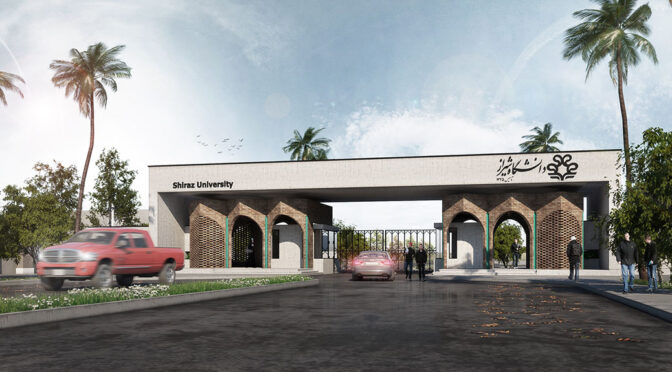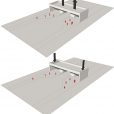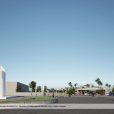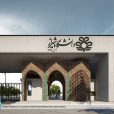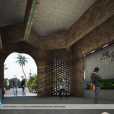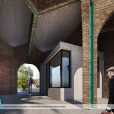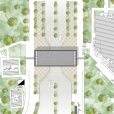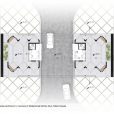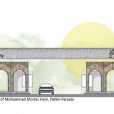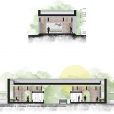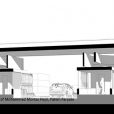سردر ورودی دانشگاه شیراز
محمد مرتاض هجری، فهیم فاریابی
موقعیت: شیراز، ایران
تاریخ: ۱۳۹۸
مساحت: ۲۶۷ مترمربع
وضعیت: طرح پیشنهادی مسابقه / رتبه دوم
کارفرما: دانشگاه شیراز
در طراحی سردر ورودی دانشگاه شیراز به دوگانه معماری دانشگاه و شیراز فکر شده است: معماری سنتی و مردموار شهر شیراز، در یکسو، و در نقطه مقابل آن، معماری مدرن و استوار دانشگاه. از اینرو، تصمیم گرفته شد نمایندهای برای همزیستی مسالمتآمیز این دو معماری به وجود آید. در همین راستا، این طرح از دو بخش تشکیل شده است: یک قاب بتنی که نماینده دانشگاه و معماری آن است، و قوسهای تاشده آجری که نماینده معماری شهر شیراز هستند.
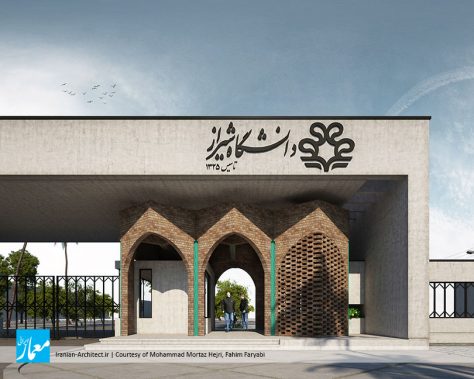
این سردر نه صرفا گذرگاهی برای عبور و مرور، که فضایی برای قرار و حضور در نظر گرفته شده است. ایده پیرنشین در معماری سنتی ایران (بهخصوص خانههای آن)، بهخوبی منشاء این طرز فکر را مشخص میسازد. لذا این سردر هم گذرگاهی برای عبور و نظارت بر اشخاص و وسایل نقلیه است، و هم فضایی برای مکث، استراحت، انتظار و قرار، و در نهایت، فضایی است برای تحقق تعاملات اجتماعی.
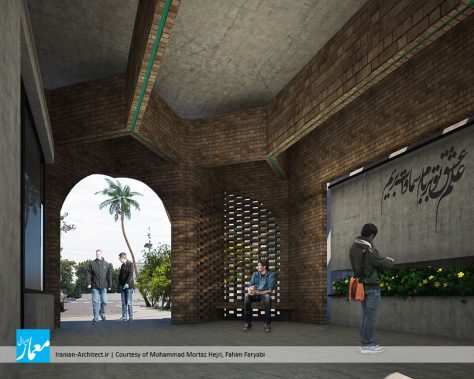
در نظام طراحی منظر این سردر، توجه خاصی به هندسهها، محورها و نوع پوشش گیاهی باغ ایرانی، خصوصا باغهای شیراز شده و همچنین سعی شده است از وضع موجود سازماندهی منظر دانشگاه نیز استفاده شود. در همین راستا، در دو محور اطراف سردر، نخلهای زینتی قرار گرفتهاند که خاصیتشان در این است که از ارتفاع بنا بالاتر رفته و برگ میدهند، و بدینترتیب، با ایجاد نوعی تمرکز بصری، بر ساختمان سردر تاکید میکنند. علاوه بر محور ذکرشده، یک محور دیگر نیز در داخل دانشگاه و پس از عبور از سردر، با توجه به وضع موجود، در نظر گرفته شده که شامل درختان مرکبات است. منشاء این نظمدهی به منظر، بهخوبی در نارنجستان قوام قابل مشاهده است.
Entrance Gate of Shiraz University
Mohammad Mortaz Hejri, Fahim Faryabi
Location: Shiraz, Iran
Date: 2020
Area: 267 sqm
Status: Competition Proposal / 2nd Place
Client: Shiraz University
The dual architecture of the university and Shiraz city has been considered in the project’s design process: in one hand, the traditional and popular architecture of Shiraz, and on the other, the modern and stable architecture of the university. So, it was decided to have a representative for the peaceful coexistence of this two architectures. This project consists of two parts: a concrete frame that represents the university and its architecture, and the folded brick arches that represent the architecture of Shiraz.
This entrance is not just a passageway, but a space for appointments and attendance. Considering the idea of the “Pir-Neshin” in traditional Iranian architecture (especially its houses), well illustrates the origin of this way of thinking. Therefore, this entrance is both a passageway and a place for supervision of people and vehicles, as well as a space for pauses, rests, waiting and appointments, and finally, a space for the social interactions.
In the landscape design, special attention has been paid to the geometries, axes and vegetation type of the Persian garden, especially the gardens of Shiraz. Attempts have also been made to use the current state of university landscape organization. In this way, there are two axes around the entrance, consist of palm trees, which have the property of rising above the height of this building, thus create a visual focus and emphasis on the building of the entrance. In addition to the mentioned axis, another axis is considered inside the university and after crossing the entrance, according to the current situation, which includes citrus trees. The origin of this arrangement can be seen well in “Narenjestan-e-Ghavam”.

